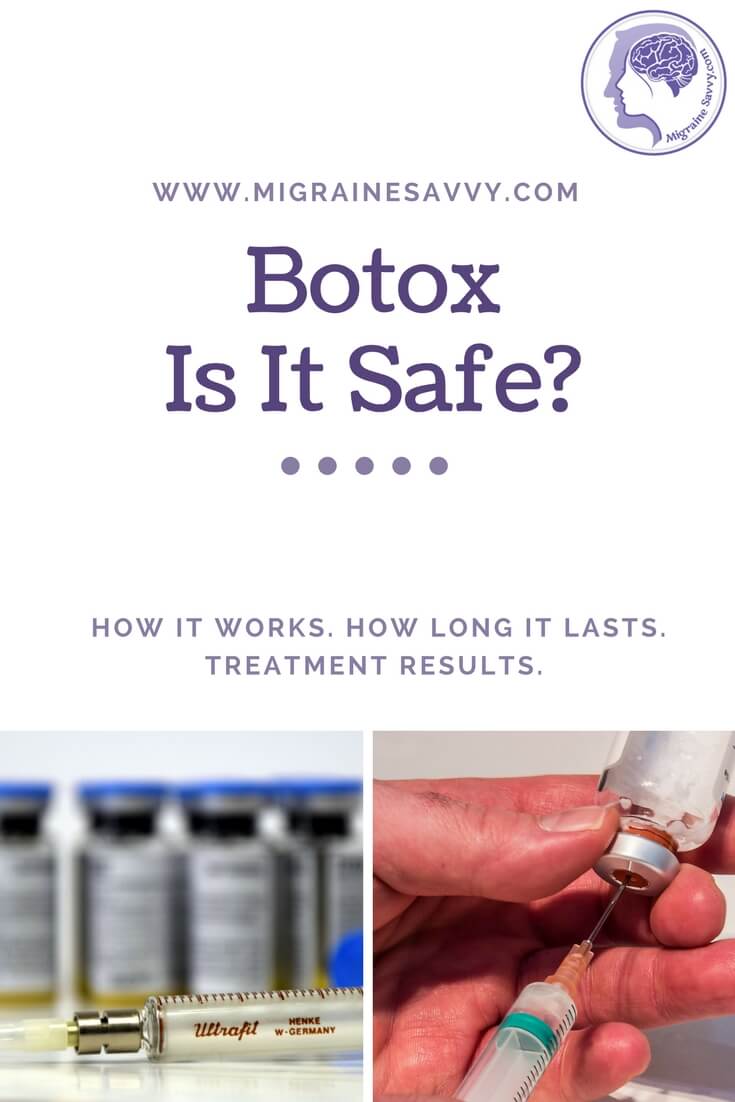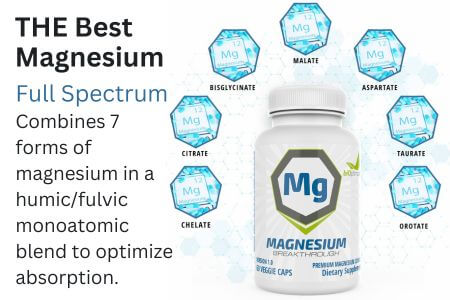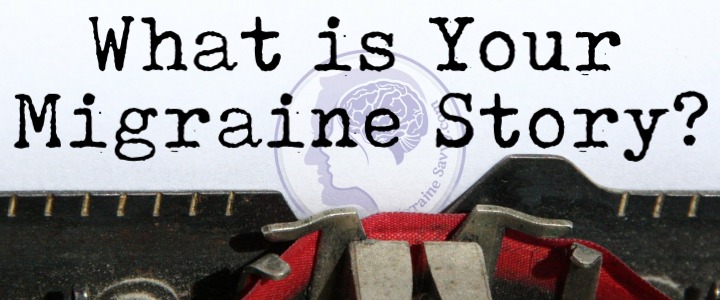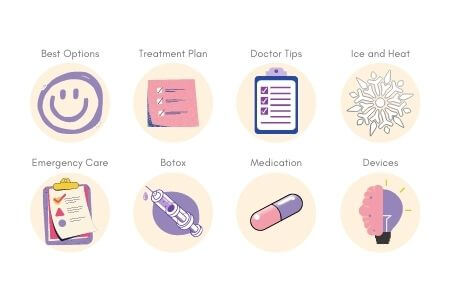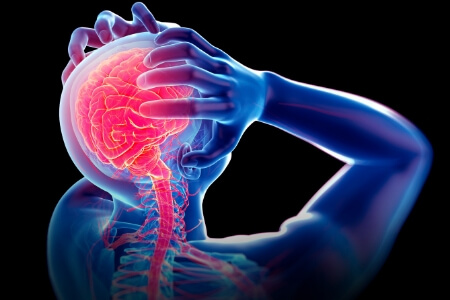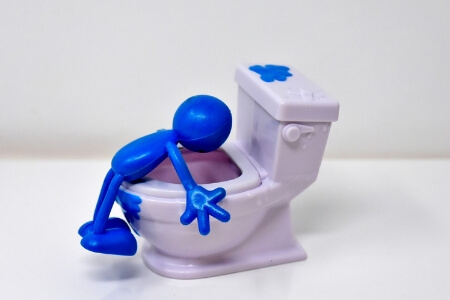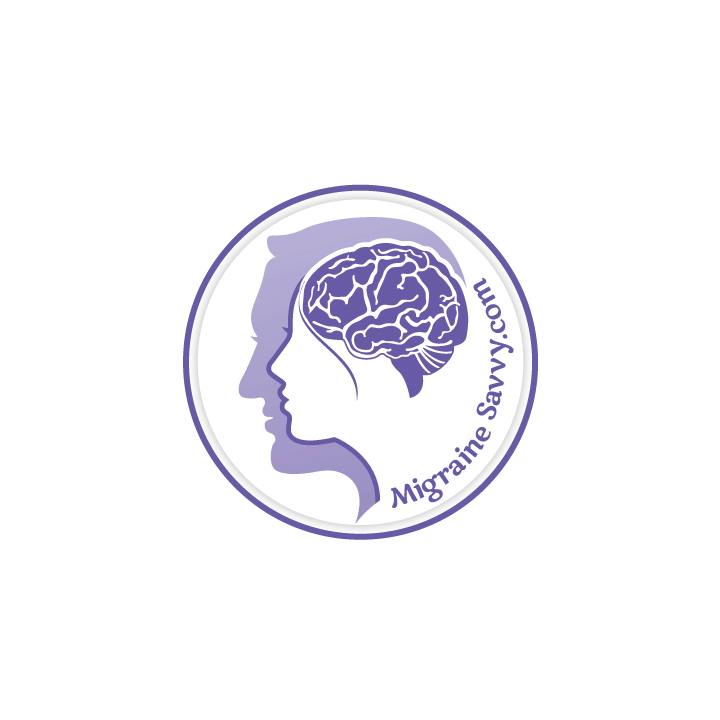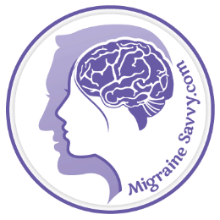- Home
- Migraine Treatments
- Is Botox for Migraine Headaches Safer Than Aspirin
COMPLETE MAGNESIUM SUPPORT
My Top Choice - Magnesium Breakthrough - The ONLY supplement with all 7 essential magnesium types in one formula. Most only have 1-2 types, leaving you deficient.
Is Botox for Migraine Headaches Safer Than Aspirin?
Botox has been used for decades for wrinkle reduction. But Botox for migraine headaches was only officially approved by the FDA in the United States in October 2010 to treat chronic migraines in adults.
And in October 2013, it was added to the PBS (pharmaceutical benefits scheme) in Australia.
But... are you still afraid to try it?
I don't blame you... it's a scary thing to inject something you can't reverse.
According to Emergency Medicine, Botox for migraines has reported a success rate of 75% in patients where other interventions have failed.
Successful treatment here is defined as a 50% reduction in the frequency, duration, and intensity of headaches.
The qualification for getting access to this chronic migraine treatment is to experience episodes for more than 15 days of the month for longer than 3 months.
The more I read the less skeptical I feel on the effects of Botox for migraine headaches. Botox is a protein complex derived from a bacterium called Clostridium Botulinum. It comes from the same toxin that can cause food poisoning in humans.
That sounds scary, doesn’t it? The FDA says that it does not cause the same effect on the skin as it does in digestion!
And pain wise... it's nothing compared to intense, relentless migraine pain.
I've already had saline injections and I can tell you it is an easy treatment choice you should consider, if your doctor and health care provider approves. The pain is minimal and the potential benefits could be huge. It's up to you!
If you are still wondering just what to do after all these years... keep reading and decide for yourself if it feels safe enough for you to try.
Dr. Binder Says It's Safer Than Aspirin
ABC Channel 7 News interviewed Beverly Hills Plastic Surgeon Dr. Binder who developed this medical breakthrough and has tested hundreds if not thousands of patients by now. In this video he says "dose for dose ratio it’s safer than Aspirin."
There are now numerous studies that find Botox treatment successful in treating the more severe chronic migraine condition. Botox injections are considered minor migraine surgery... but with a quick recovery says Dr. John Moore of Heartland Surgical Specialty Hospital in Kansas City.
(a) The Treatment / Procedure
The actual procedure is simple, once you have been approved to have this course of treatment. Oh and just a little P.S. you might want to wash your hair in case the injections sites are sore for a few days.
Here are the things you can expect when using Botox for migraine headaches:
1. The doctor will determine where to administer the injections by examining your pain sites and associated muscles in your eyes, head, neck and face.
2. Botox (Botulinum toxin type A) is then injected with a very tiny needle into the predetermined sites. There could be 17 to 31 separate injections required. Allergan Inc. - the company that makes Botox - says that when treating chronic migraine, qualified medical specialists can administer up to 31 Botox injections into seven specific head and neck sites.
3. Although the exact mechanism of Botox is unknown, it is speculated that the neurotoxin may reduce the release of neuropeptides that have an end result of the relaxing the muscles. Keep reading to learn more details on how it works below.
4. Normally no anesthesia is required; however, your doctor or specialist may choose to numb the area prior to injection. In usual cases the actual Botox treatment itself lasts minutes and not hours, and no recovery time is needed. Normally, with minimal discomfort, you can resume normal activity shortly after the treatment.
5. It may take 3 - 7 days to notice any improvement in your migraines.
6. Botox for migraine headaches needs to be repeated every 3 - 5 months.
7. The drug becomes more efficient with more applications. Yeah!
8. Women who are pregnant or breastfeeding should avoid this treatment.
(b) How It Works
What is Botox? It is the pharmaceutical company Allergan Inc's brand name for the Botulinum Toxin Type A that is produced by the bacteria clostridium botulinum.
The bacteria are normally considered harmful and life threatening inside the body (food poisoning) and can lead to muscle paralysis or weakness.
However, Botox injections into the skin are
considered quite safe especially when used in small
doses and injected directly into a specific area.
Although the
exact mechanism of Botox is unknown, it is currently hypothesized that
the neurotoxin may reduce the release of neuropeptides (known to
potentiate the migraine process) within the trigeminal vascular system
by attaching itself to nerve endings.
During unimpeded muscle function, the neurotransmitter acetylcholine is released from these nerve endings causing muscle contractions. The Botox then blocks the release of acetylcholine, causing the muscle to become relaxed.
This is my simplified interpretation of a very complex process.
(c) How Long It Lasts
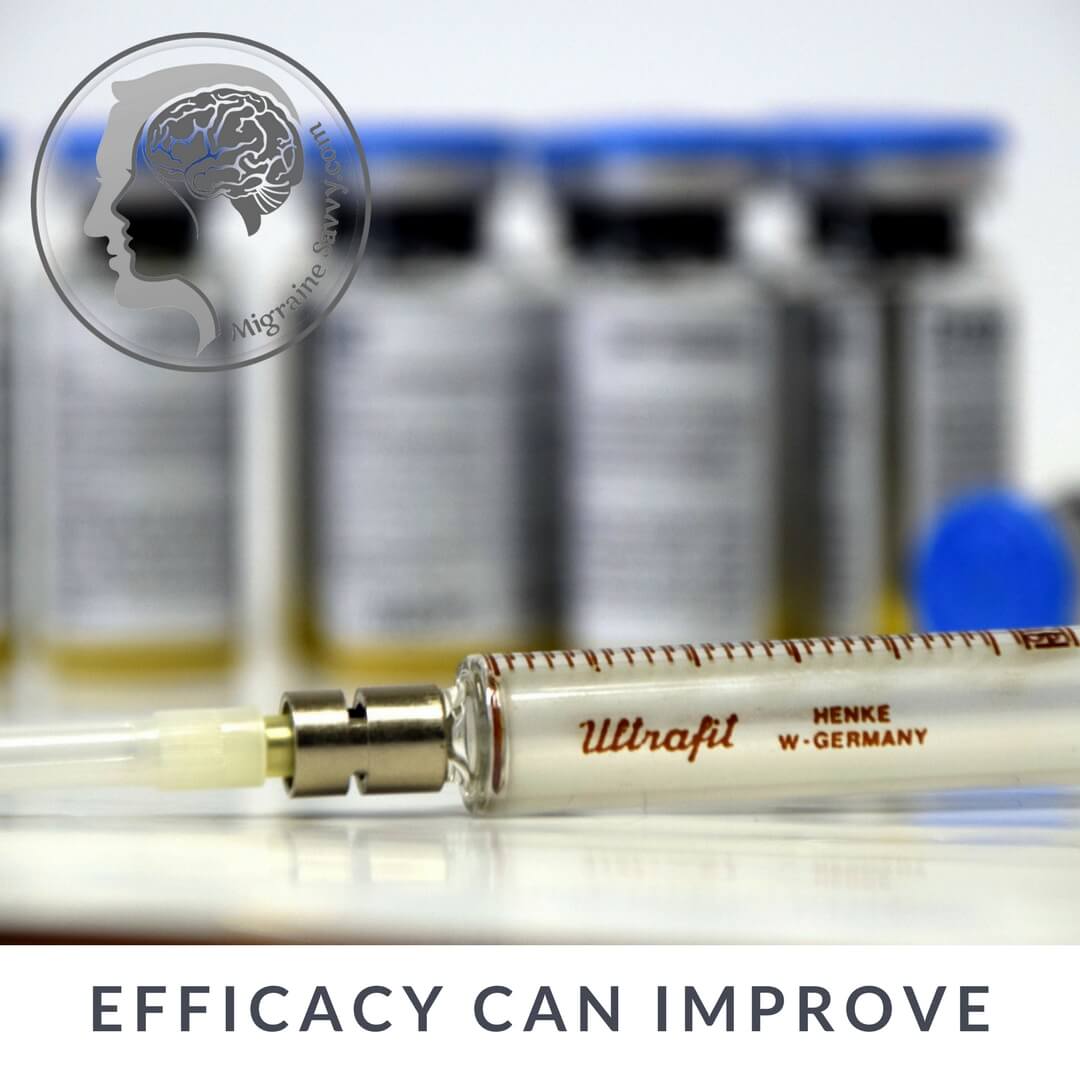
The FDA says that Botox, when injected at labelled doses in recommended areas, is expected to produce results lasting up to three months depending on the individual patient.
Repeated treatments are showing more lasting effects.
Another source confirms that it may take 3 - 7 days to notice any improvement and the effects last for 3 - 5 months.
And it has been found so far, in most cases that the more injections administered, the more efficient the drug becomes.
This sounds like exceptionally good news to me! This fact about Botox for migraine headaches is not commonly disclosed.
(d) The Treatment Results You Can Expect
Botox for migraine headaches has been found successful in:
- reducing the need for multiple preventive medications;
- decreasing the frequency of triptan use;
- and minimizing the frequency of emergency hospital and Doctors
office visits in a growing number of patients.
Medical Doctors who have been using Botox since 2000 are reporting a success rate of 75% in patients where other traditional forms of treatment have been unsuccessful. They define success as a 50% reduction in the frequency, duration, and severity of attacks.
There is no guaranteed outcome, you will have to try it to determine your results.
(e) Is It Safe?
When administered by Medical Doctors with specific expertise in Botox for migraine headaches, the Botox injections are considered to be completely safe.
However, it is still a relatively new treatment and even here in Australia the head office of Allergan Inc., the maker of Botox, it is difficult to find a doctor who will treat chronic migraines with Botox.
If you get long nasty attacks (like I used to... 20 days straight), you might feel pretty much ready to try anything new to get rid of them. You might even feel really desperate some days.
But make sure you seek out a medical professional to have this treatment. Maybe even go through the necessary steps with getting a referral from your doctor for the specialist who does Botox to have a chat, gather information and be in the system so you don't have to wait for months when you do make the decision to go forward.
If you can't afford to see the specialist, then at least get a number and phone the receptionist. I talk about these things in my migraine pain management course. Have a look it's free to enroll.
Make sure you get your Botox injections from a qualified medical professional. There have been reported deaths from amateurs administering the injections.
My #1 Choice in Magnesium Supplements
The Side Effects To Watch For
There are some additional mild and temporary side effects to consider that are associated with the actual injections themselves. These include:
- pain
- possible swelling
- bruising and tenderness associated with the
injection sites
Additionally, some people experience:
- a slight headache right after the treatment is administered
- nausea and flu like symptoms
- a drooping eyelid
A drooping eyelid seems to be a common side effect.
Always ask your Doctor for the more serious side effects that pertain to you individually. We all have different medical conditions that may effect the results.
Two different injection strategies are used in Botox treatment for migraine headaches called "fixed-site" and "follow the pain". Please click on the link Botox injection for migraine for more details on the strategies.
Have You Tried Botox for Migraine Headaches?
Has Botox worked for you? Come share your story... it's good therapy!
WANT MORE TIPS? Subscribe to my newsletter and follow along on Facebook and Pinterest for all of the latest updates.
MIGRAINE TREATMENTS Related Articles
How to be more MIGRAINE SAVVY right now...
Botox for Migraine Headaches References:
1. Webmd.com (2014) Botulinum Toxin (Botox) Treatment Overview. Available at:http://www.webmd.com/beauty/botox/botulinum-toxin-botox Accessed March 6, 2015.
2. Emergency Medicine (2011) Understanding Migraine: Strategies for Prevention. Available at: http://www.emedmag.com/html/pre/fea/features/101503.asp Accessed June 6, 2011.
3. The U.S. Food and Drug Administration (2010) Botox Medication Guide. Available at: http://www.fda.gov/downloads/Drugs/DrugSafety/UCM176360.pdf Accessed on May 31, 2011.
